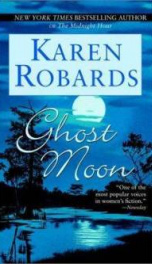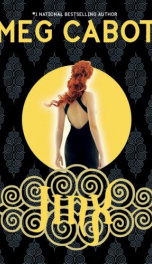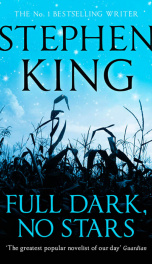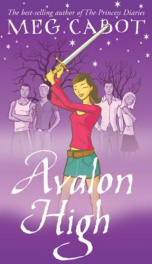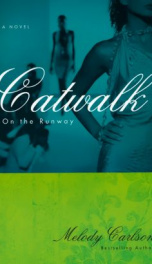Poe Edgar Allan
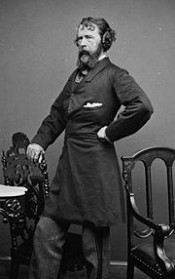
Nathaniel Parker Willis (January 20, 1806 – January 20, 1867), also known as N. P. Willis,[1] was an American author, poet and editor who worked with several notable American writers including Edgar Allan Poe and Henry Wadsworth Longfellow. He became the highest-paid magazine writer of his day. For a time, he was the employer of former slave and future writer Harriet Jacobs. His brother was the composer Richard Storrs Willis and his sister wrote under the name Fanny Fern. Born in Portland, Maine, Willis came from a family of publishers. His grandfather owned newspapers in Massachusetts and Virginia, and his father was the founder of Youth's Companion, the first newspaper specifically for children. Willis developed an interest in literature while attending Yale College and began publishing poetry. After graduation, he worked as an overseas correspondent for the New York Mirror. He eventually moved to New York and began to build his literary reputation. Working with multiple publications, he was earning about US$100 per article and between $5,000[2] and $10,000 per year.[3] In 1846, he started his own publication, the Home Journal, which was eventually renamed Town & Country. Shortly after, Willis moved to a home on the Hudson River where he lived a semi-retired life until his death in 1867. Willis embedded his own personality into his writing and addressed his readers personally, specifically in his travel writings, so that his reputation was built in part because of his character. Critics, including his sister in her novel Ruth Hall, occasionally described him as being effeminate and Europeanized. Willis also published several poems, tales, and a play. Despite his intense popularity for a time, at his death Willis was nearly forgotten. Nathaniel Parker Willis was born January 20, 1806, in Portland, Maine.[4] His father Nathaniel Willis was a newspaper proprietor there and his grandfather owned newspapers in Boston, Massachusetts and western Virginia.[5] His mother was Hannah Willis (née Parker) from Holliston, Massachusetts and it was her husband's offer to edit the Eastern Argus in Maine that caused their move to Portland.[6] Willis's younger sister was Sara Willis Parton, who would later become a writer under the pseudonym Fanny Fern. His brother, Richard Storrs Willis, became a musician and music journalist known for writing the melody for "It Came Upon the Midnight Clear".[7] His other siblings were Lucy Douglas (born 1804), Louisa Harris (1807), Julia Dean (1809), Mary Perry (1813), Edward Payson (1816), and Ellen Holmes (1821).[8] In 1816, the family moved to Boston, where Willis's father established the Boston Recorder and, nine years later, the Youth's Companion,[9] the world's first newspaper for children.[10] The elder Willis's emphasis on religious themes earned him the nickname "Deacon" Willis.[1] After attending a Boston grammar school and Phillips Academy at Andover, Nathaniel Parker Willis entered Yale College in October 1823[11] where he roomed with Horace Bushnell.[12] Willis credited Bushnell with teaching him the proper technique for sharpening a razor by "drawing it from heel to point both ways ... the two cross frictions correct each other".[13] At Yale, he further developed an interest in literature, often neglecting his other studies.[9] He graduated in 1827[14] and spent time touring parts of the United States and Canada. In Montreal, he met Chester Harding, with whom he would become a lifelong friend. Years later, Harding referred to Willis during this period as "the 'lion' of the town".[15] Willis began publishing poetry in his father's Boston Periodical, often using one of two literary personalities under the pen names "Roy" (for religious subjects) and "Cassius" (for more secular topics).[11] The same year, Willis published a volume of poetical Sketches.[4] In the latter part of the 1820s, Willis began contributing more frequently to magazines and periodicals. In 1829, he served as editor for the gift book The Token, making him the only person to be editor in the book's 15-year history besides its founder, Samuel Griswold Goodrich.[16] That year, Willis founded the American Monthly Magazine,[11] which began publishing in April 1829 until it was discontinued in August 1831.[4] He blamed its failure on the "tight purses of Boston culture"[14] and moved to Europe to serve as foreign editor and correspondent of the New York Mirror.[4] In 1832, while in Florence, Italy, he met Horatio Greenough, who sculpted a bust of the writer.[17] Between 1832 and 1836, Willis contributed a series of letters for the Mirror, about half of which were later collected as Pencillings by the Way, printed in London in 1835.[18] The romantic descriptions of scenes and modes of life in Europe sold well despite the then high price tag of $7 a copy. The work became popular and boosted Willis's literary reputation enough that an American edition was soon issued.[19] Despite this popularity, he was censured by some critics for indiscretion in reporting private conversations. At one point he fought a bloodless duel with Captain Frederick Marryat, then editor of the Metropolitan Magazine, after Willis sent a private letter of Marryat's to George Pope Morris, who had it printed.[20] Still, in 1835 Willis was popular enough to introduce Henry Wadsworth Longfellow to important literary figures in England, including Ada Byron, daughter of Lord Byron.[21] While abroad, Willis wrote to a friend, "I should like to marry in England".[22] He soon married Mary Stace, daughter of General William Stace of Woolwich, on October 1, 1835, after a month-long engagement.[23] The couple took a two-week honeymoon in Paris.[22] The couple moved to London where, in 1836, Willis met Charles Dickens, who was working for the Morning Chronicle at the time.[24] In 1837, Willis and his wife returned to the United States[25] and settled at a small estate on Owego Creek in New York, just above its junction with the Susquehanna River.[26] He named the home Glenmary and the 200-acre (0.81 km2) rural setting inspired him to write Letters from under a Bridge.[27] On October 20, 1838, Willis began a series of articles called "A New Series of Letters from London", one of which suggested an illicit relationship between writer Letitia Elizabeth Landon and editor William Jordan. The article caused some scandal, for which Willis's publisher had to apologize.[28] On June 20, 1839, Willis's play Tortesa, the Usurer premiered in Philadelphia at the Walnut Street Theatre.[29] Edgar Allan Poe called it "by far the best play from the pen of an American author".[30] That year, he was also editor of the short-lived periodical The Corsair, for which he enlisted William Makepeace Thackery to write short sketches of France.[31] Another major work, Two Ways of Dying for a Husband, was published in England during a short visit there in 1839–1840. Shortly after returning to the United States, his personal life was touched with grief when his first child was stillborn on December 4, 1840. He and Stace had a second daughter, Imogen, who was born June 20, 1842.[32] Later that year, Willis attended a ball in honor of Charles Dickens in New York. After dancing with Dickens's wife, Willis and Dickens went out for "rum toddy and broiled oysters".[24] By this time, his fame had grown enough that he was often invited to lecture and recite poetry, including his presentation to the Linonian Society at Yale on August 17, 1841.[33] Willis was invited to submit a column to the each weekly issue of Brother Johnathan, a publication from New York with 20,000 subscribers, which he did until September 1841.[34] By 1842, Willis was earning the unusually-high salary of $4,800 a year. As a later journalist remarked, this made Willis "the first magazine writer who was tolerably well paid".[35] In 1842, Willis employed Harriet Jacobs, an escaped slave from North Carolina, as a house servant and nanny. When her owners sought to have her returned to their plantation,[36] Willis's wife bought her freedom for $300.[37] Nearly two decades later, Jacobs would write in her fictionalized autobiography Incidents in the Life of a Slave Girl, which she began composing while while working for the Willis family,[38] that she "was convinced that ... Nathaniel Parker Willis was proslavery".[39] Willis is depicted as "Mr. Bruce", an unattractive Southern sympathizer in the book.[40] One of Willis's tales, "The Night Funeral of a Slave", featured an abolitionist who visits the South and regrets his anti-slavery views; Frederick Douglass later used the work to criticize Northerners who were pro-slavery.[41] Returning to New York City, Willis reorganized, along with George Pope Morris, the weekly New York Mirror as the daily Evening Mirror[25] in 1844 with a weekly supplement called the Weekly Mirror, in part due to the rising cost of postage.[42] By this time, Willis was a popular writer (a joke was that Johann Wolfgang von Goethe was Germany's version of N. P. Willis) and one of the first commercially-successful magazine writers in America.[43] In the fall of that year, he also became the first editor of the annual gift book The Opal founded by Rufus Wilmot Griswold.[44] During this time, he became the highest-paid magazine writer in America, earning about $100 per article and $5,000 per year,[43] a number which would soon double. Even the popular poet Longfellow admitted his jealousy of Willis's salary.[3] As a critic, Willis did not believe in including discussions of personalities of writers when reviewing their works. He also believed that, though publications should discuss political topics, they should not express party opinions or choose sides.[45] The Mirror flourished at a time when many publications were discontinuing. Its success was due to the shrewd management of Willis and Morris and the two demonstrated that the American public could support literary endeavors.[46] Willis was becoming an expert in American literature and so, in 1845, Willis and Morris issued an anthology, The Prose and Poetry of America.[47] While Willis was editor of the Evening Mirror, it was the first to publish Poe's poem "The Raven" in its January 29, 1845, issue. In his introduction, Willis called it "unsurpassed in English poetry for subtle conception, masterly ingenuity of versification, and consistent, sustaining of imaginative lift ... It will stick to the memory of everybody who reads it".[48] Willis and Poe were close friends, and Willis helped Poe financially during his wife Virginia's illness and while Poe was suing Thomas Dunn English for libel.[49] Willis often tried to persuade Poe to be less destructive in his criticism and concentrate on his poetry.[50] Even so, Willis published many pieces of what would later be referred to as "The Longfellow War", a literary battle between Poe and the supporters of Henry Wadsworth Longfellow, whom Poe called overrated and guilty of plagiarism.[51] Willis also introduced Poe to Fanny Osgood; the two would later carry out a very public literary flirtation.[52]
do you like this author?
What readers are saying
What do you think? Write your own comment on this book!
write a commentWhat readers are saying
What do you think? Write your own comment on this author!
write a commentBook list

The Works of Edgar Allan Poe,The Raven EditionTable Of Contents And Index Of The Five Volumes
Series:
Unknown
Year:
Unknown
Raiting:
4.5/5
Show more
add to favoritesadd In favorites
Book list

The Works of Edgar Allan Poe,The Raven EditionTable Of Contents And Index Of The Five Volumes
Series:
Unknown
Year:
Unknown
Raiting:
4.5/5
Show more
add to favoritesadd In favorites

the bells and other poems
Series:
Unknown
Year:
Unknown
Raiting:
0.5/5
Brand new LEATHER BOUND book accented in 22kt gold.
Show more
add to favoritesadd In favorites

some letters of edgar allan poe to e h n patterson of oquawka illinois
Series:
Unknown
Year:
Unknown
Raiting:
3/5
Many of the earliest books, particularly those dating back to the 1900s and before, are now extremely scarce and increasingly expensive. We are republishing these classic works in affordable, high quality, modern editions, using the original text and artwork.
Show more
add to favoritesadd In favorites
What readers are saying
What do you think? Write your own comment on this author!
write a commentif you like Poe Edgar Allan try:
readers also enjoyed
What readers are saying
What do you think? Write your own comment on this author!
write a commentGenre
if you like Poe Edgar Allan try:
readers also enjoyed
Do you want to exchange books? It’s EASY!
Get registered and find other users who want to give their favourite books to good hands!




